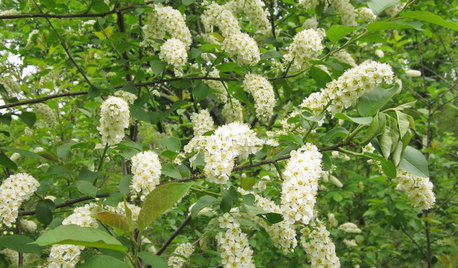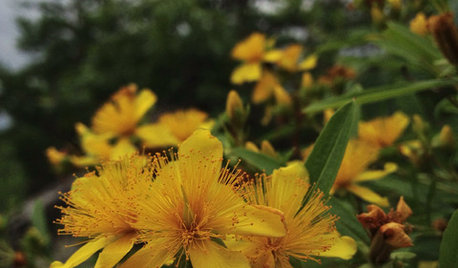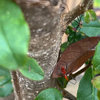An entire yard of invasive species
pbl_ge
12 years ago
Related Stories

TREESNative Plant Alternatives to Invasive Common Buckthorn
Learn how to identify and control this aggressive plant, and what to grow in its place
Full Story
GARDENING GUIDESDo You Have This Invasive Plant in Your Yard?
Garlic mustard is spreading across the U.S. Here’s how to spot it and what to do
Full Story
GARDENING GUIDES13 North American Backyard Birds to Know
Find out about these enchanting native species and learn how to attract them to your yard
Full Story
GARDENING GUIDESHypericum Prolificum Brings the Best of St. Johnswort to the Garden
This eastern North American species pairs bright yellow summer flowers with compact shrubbery
Full Story
GARDENING GUIDES6 Plants That Beat Butterfly Bush for the Wildlife Draw
It's invasive, a nonnative and a poor insect magnet. Check out these better alternatives to butterfly bush in the garden
Full Story
FARM YOUR YARDHow to Build a Raised Bed for Your Veggies and Plants
Whether you’re farming your parking strip or beautifying your backyard, a planting box you make yourself can come in mighty handy
Full Story
FLOWERSRudbeckia Mania: Go Beyond Black-Eyed Susan in the Garden
Branch out from typical nursery fare, with lesser-known Rudbeckia species that have delightfully unexpected features
Full Story
GARDENING GUIDESHow to Find the Right Native Plants for Your Yard
Find plant maps, sale sites and guides that make going native in the garden easier than ever
Full Story
LANDSCAPE DESIGN15 Great Ideas for a Lawn-Free Yard
End the turf war for good with hardscaping, native grasses and ground covers that save water and are easier to maintain
Full Story
FARM YOUR YARDHello, Honey: Beekeeping Anywhere for Fun, Food and Good Deeds
We need pollinators, and they increasingly need us too. Here, why and how to be a bee friend
Full StoryMore Discussions








rhizo_1 (North AL) zone 7
Kimmsr
Related Professionals
New Bedford Landscape Architects & Landscape Designers · Chesapeake Ranch Estates Landscape Contractors · Davidson Landscape Contractors · Gainesville Landscape Contractors · Golden Gate Landscape Contractors · Vermilion Landscape Contractors · Yuba City Landscape Contractors · North Hills Landscape Contractors · Estero Decks, Patios & Outdoor Enclosures · Gaithersburg Decks, Patios & Outdoor Enclosures · Gladstone Decks, Patios & Outdoor Enclosures · Glen Ellyn Decks, Patios & Outdoor Enclosures · Greendale Decks, Patios & Outdoor Enclosures · Rogers Decks, Patios & Outdoor Enclosures · West Bend Decks, Patios & Outdoor Enclosuresrosiew
pbl_geOriginal Author
Tiffany, purpleinopp Z8b Opp, AL
myluck
rhizo_1 (North AL) zone 7
rhizo_1 (North AL) zone 7
pbl_geOriginal Author
rhizo_1 (North AL) zone 7
pnbrown
Tiffany, purpleinopp Z8b Opp, AL
Dan _Staley (5b Sunset 2B AHS 7)
pbl_geOriginal Author
rhizo_1 (North AL) zone 7
Kimmsr
lisanti07028
pbl_geOriginal Author
Tiffany, purpleinopp Z8b Opp, AL
pbl_geOriginal Author
pnbrown
terrene
pbl_geOriginal Author
Tiffany, purpleinopp Z8b Opp, AL